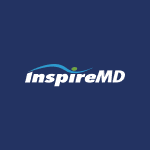InspireMD Q3 2021 Earnings Report
Key Takeaways
InspireMD reported a 9.3% increase in revenue to $1.071 million for Q3 2021, driven by a 23.8% increase in CGuard EPS sales volume. The company's net loss totaled $4.071 million, or $0.53 per share, compared to a net loss of $2.233 million, or $0.96 per share, for the same period in 2020. Cash, cash equivalents, and short-term bank deposits were $37.1 million as of September 30, 2021.
Revenue increased by 9.3% to $1,071,000 compared to Q3 2020.
CGuard EPS sales volume increased by 23.8% year-over-year.
Gross profit decreased by $206,000 to $92,000.
Net loss for the quarter was $4,071,000, or $0.53 per share.
InspireMD
InspireMD
InspireMD Revenue by Segment
Revenue by Segment
Forward Guidance
The company anticipates continued progress with reimbursement initiatives and growing global demand for CGuard EPS. They expect the fourth quarter of 2021 to yield additional site approvals and patient enrollments for the U.S. C-Guardians trial and are advancing towards regulatory approvals of two new delivery systems.
Positive Outlook
- Successful expansion of CGuard™ into France, representing progress in reimbursement initiatives.
- Growing global demand from physicians for CGuard™ when treating CAD.
- On track trial enrollment levels for the U.S. C-Guardians trial.
- Expected additional site approvals and patient enrollments in Q4 2021.
- Advancing toward regulatory approvals of two new delivery systems.
Challenges Ahead
- Risks associated with market acceptance of existing and new products.
- Potential for negative clinical trial results or lengthy product delays.
- Inability to secure regulatory approvals for product sales.
- Intense competition in the medical device industry.
- Reliance on single suppliers for certain product components.

